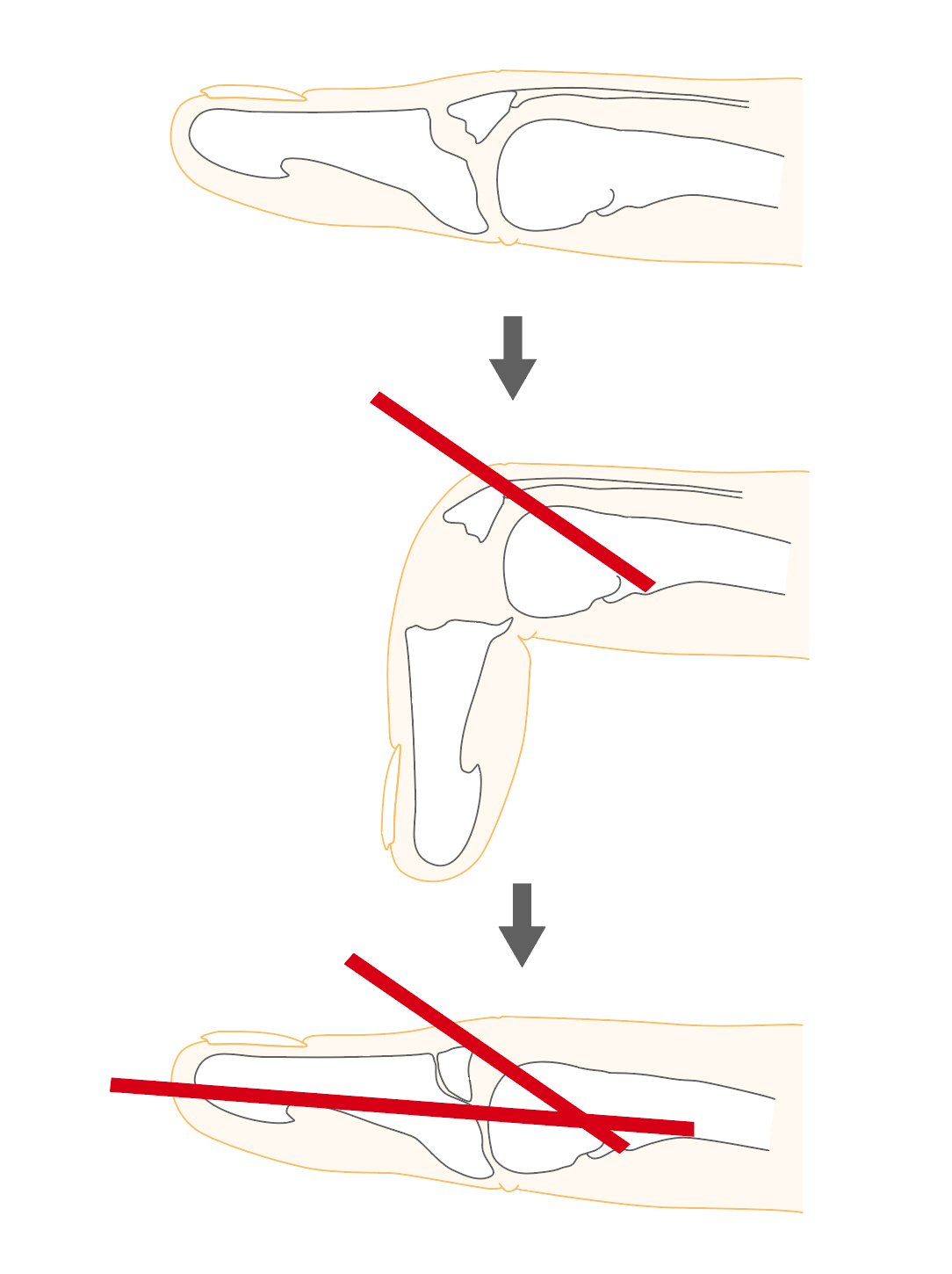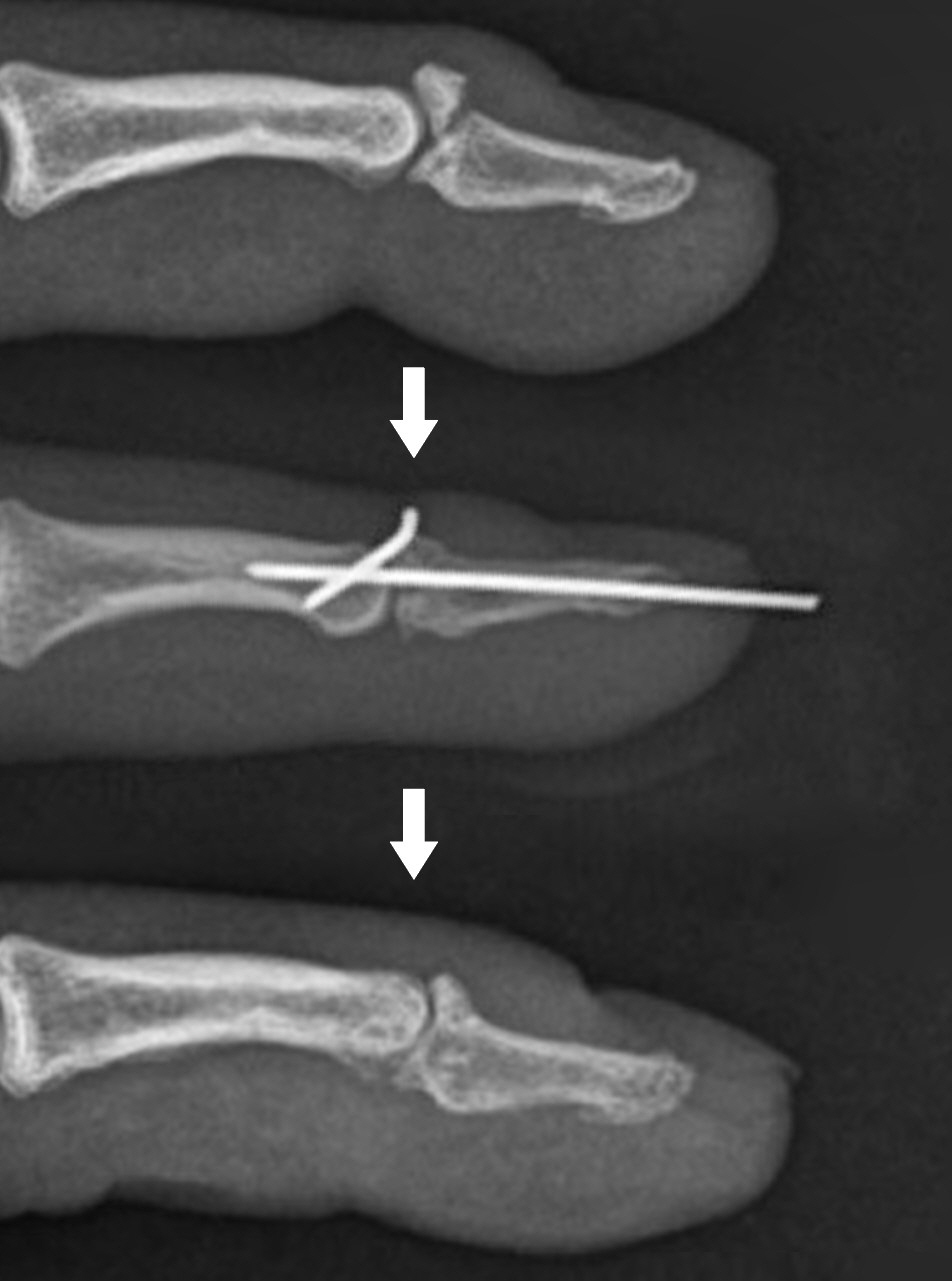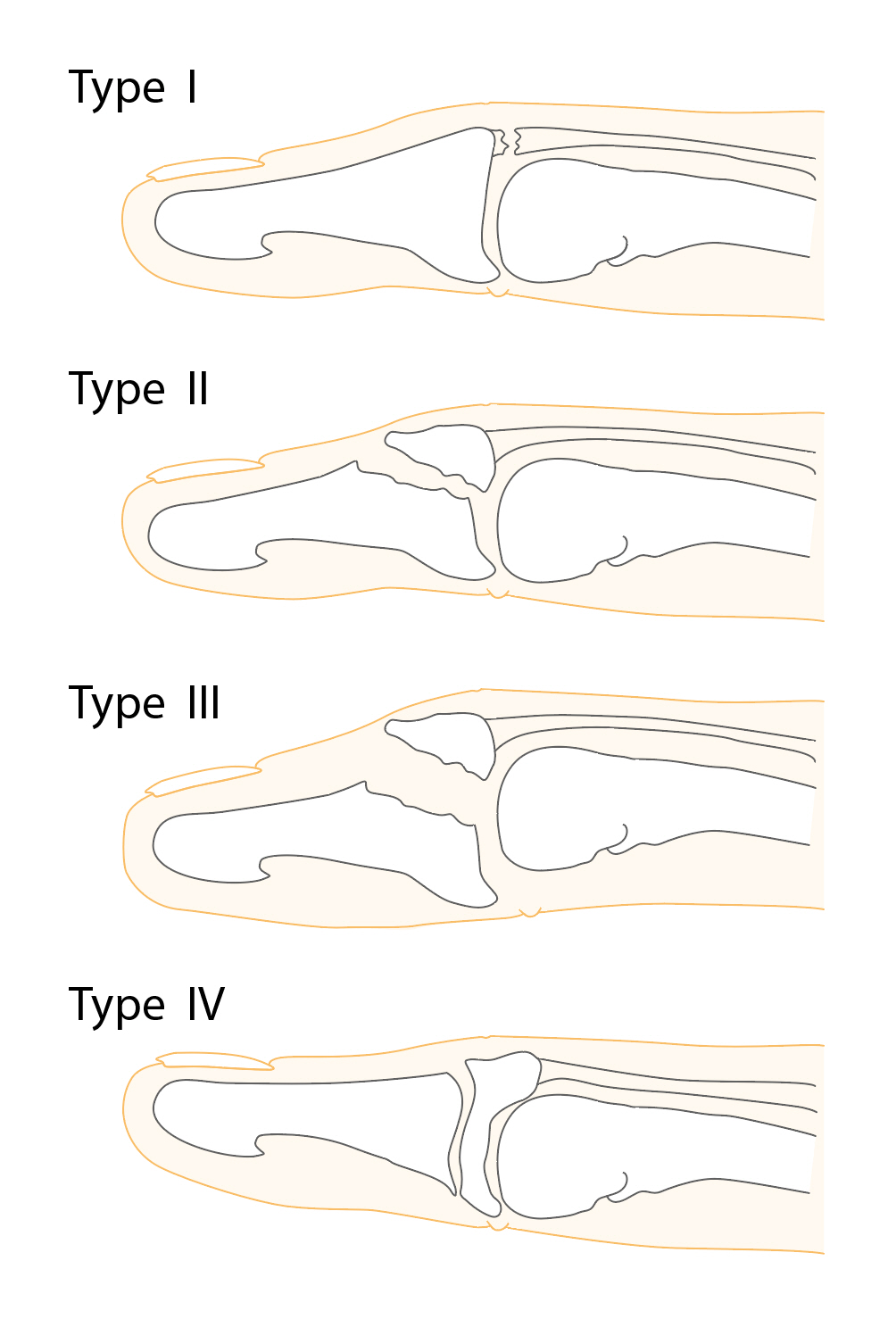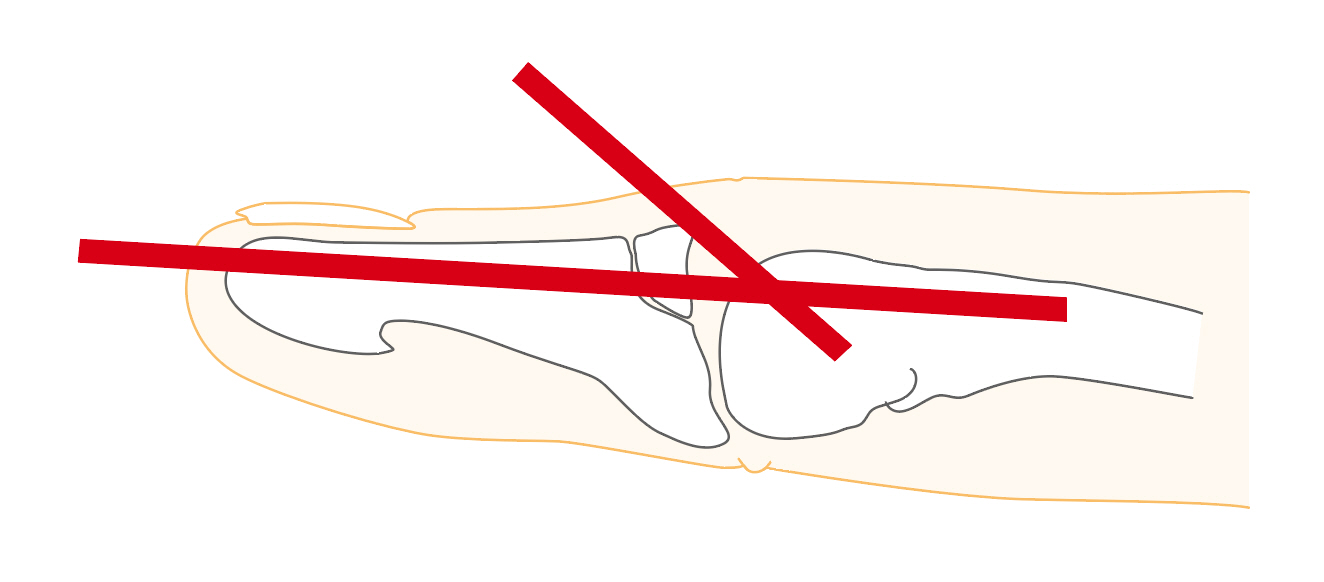Arch Hand Microsurg.
2021 Dec;26(4):238-244. 10.12790/ahm.21.0129.
Osteoarthritis after Extension Block Technique for the Bony Mallet Finger
- Affiliations
-
- 1Department of Plastic and Reconstructive Surgery, Gwangmyeong Sungae General Hospital, Gwangmyeong, Korea
- KMID: 2522621
- DOI: http://doi.org/10.12790/ahm.21.0129
Abstract
- Purpose
The purpose of this study is to investigate osteoarthritis after treatment of bony mallet finger using the extension block method.
Methods
A single institutional retrospective review identified 163 patients with bony mallet between January 2012 and July 2020 and received surgical treatment using extension block method. The radiographic examination showed that the fracture line disappeared and a bridging callus was formed and bone union was confirmed. Fractures were classified according to the Tubiana classification method. Demographic data, fracture pattern, postoperative X-ray, and late complications were analyzed. Clinical outcomes were analyzed using Crawford’s criteria.
Results
Surgical treatment was performed within an average of 8.8 days after injury, and the average follow-up period was 11.6 weeks. Osteoarthritis findings were confirmed by joint space narrowing and osteophytes on radiographic examination of 32 out of 163 patients. Age, sex, occupation, location of trauma, operation time, and type of fracture did not affect the osteoarthritis after extension block. Invasion of Kirschner wire (K-wire) to the fracture surface, family history of osteoarthritis, and operation time turned out to have a statistically significant effect on osteoarthritis (p<0.05).
Conclusions
Fracture surface invasion of K-wire and family history of osteoarthritis affect osteoarthritis after treatment of bony mallet.
Keyword
Figure
Reference
-
1. Darder-Prats A, Fernández-García E, Fernández-Gabarda R, Darder-García A. Treatment of mallet finger fractures by the extension-block K-wire technique. J Hand Surg Br. 1998; 23:802–5.
Article2. Niechajev IA. Conservative and operative treatment of mallet finger. Plast Reconstr Surg. 1985; 76:580–5.
Article3. Stark HH, Gainor BJ, Ashworth CR, Zemel NP, Rickard TA. Operative treatment of intra-articular fractures of the dorsal aspect of the distal phalanx of digits. J Bone Joint Surg Am. 1987; 69:892–6.
Article4. Lee YH, Kim JY, Chung MS, Baek GH, Gong HS, Lee SK. Two extension block Kirschner wire technique for mallet finger fractures. J Bone Joint Surg Br. 2009; 91:1478–81.
Article5. Wehbé MA, Schneider LH. Mallet fractures. J Bone Joint Surg Am. 1984; 66:658–69.
Article6. Damron TA, Engber WD. Surgical treatment of mallet finger fractures by tension band technique. Clin Orthop Relat Res. 1994; (300):133–40.
Article7. Kronlage SC, Faust D. Open reduction and screw fixation of mallet fractures. J Hand Surg Br. 2004; 29:135–8.
Article8. Yamanaka K, Sasaki T. Treatment of mallet fractures using compression fixation pins. J Hand Surg Br. 1999; 24:358–60.
Article9. Kang HJ, Lee SK. Open accurate reduction for irreducible mallet fractures through a new pulp traction technique with primary tendon repair. J Plast Surg Hand Surg. 2012; 46:438–43.
Article10. Teoh LC, Lee JY. Mallet fractures: a novel approach to internal fixation using a hook plate. J Hand Surg Eur Vol. 2007; 32:24–30.
Article11. Ishiguro T, Itoh Y, Yabe Y, Hashizume N. Extension block with Kirschner wire for fracture dislocation of the distal interphalangeal joint. Tech Hand Up Extrem Surg. 1997; 1:95–102.
Article12. Zhang W, Li W, Liu Z, et al. Effectiveness of modified Ishiguro technique with strengthening pressure in treatment of bony mallet fingers. Zhongguo Xiu Fu Chong Jian Wai Ke Za Zhi. 2016; 30:705–8.13. Lin JS, Samora JB. Surgical and nonsurgical management of mallet finger: a systematic review. J Hand Surg Am. 2018; 43:146–63.
Article14. Robb WA. The results of treatment of mallet finger. J Bone Joint Surg Br. 1959; 41-B:546–9.
Article15. Lubahn JD. Mallet finger fractures: a comparison of open and closed technique. J Hand Surg Am. 1989; 14(2 Pt 2):394–6.
Article16. Hahn SB, Park KH, Choi YR, Kang HJ, Lee JK. Prognostic factors of the extension block technique for the bony mallet finger. J Korean Orthop Assoc. 2010; 45:127–32.
Article17. Takami H, Takahashi S, Ando M. Operative treatment of mallet finger due to intra-articular fracture of the distal phalanx. Arch Orthop Trauma Surg. 2000; 120:9–13.18. Choi JY, Jung HJ, Lee HJ, Son KM, Kim YH. Treatment of bony mallet finger: closed reduction using extension block K-wire. J Korean Fract Soc. 2004; 17:362–7.
Article19. Acar MA, Güzel Y, Güleç A, Uzer G, Elmadağ M. Clinical comparison of hook plate fixation versus extension block pinning for bony mallet finger: a retrospective comparison study. J Hand Surg Eur Vol. 2015; 40:832–9.
Article20. Khanna A, Plessas SJ, Barrett P, Bainbridge LC. The thermal effects of Kirschner wire fixation on small bones. J Hand Surg Br. 1999; 24:355–7.
Article21. Punzi L, Galozzi P, Luisetto R, et al. Post-traumatic arthritis: overview on pathogenic mechanisms and role of inflammation. RMD Open. 2016; 2:e000279.
Article
- Full Text Links
- Actions
-
Cited
- CITED
-
- Close
- Share
- Similar articles
-
- Prognostic Factors of the Extension Block Technique for the Bony Mallet Finger
- Treatment of Bony Mallet Finger: Closed Reduction Using Extension Block K-wire
- The Result of the Modified Extension Block Technique in Bony Mallet Finger
- Modified Extension Block Technique Using Conjoined Kirschner Wires for Bony Mallet Fingers
- Treatment of Mallet Finger Fracture by Extension Block K-wire Fixation





